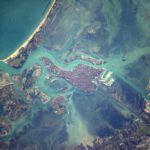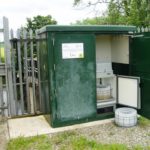Davide Gallazzi tells us about the flooding of Venice in…
Assessment of the catchments that need reductions in nitrogen concentrations to achieve water quality objectives
The EPA has carried out an analysis to identify the catchments where nitrogen concentrations are too high to support healthy aquatic ecosystems, or at least Good Ecological Status under the Water Framework Directive.
The reductions in nitrogen in waters that are needed in these catchments has been calculated, and critical source area maps have been developed to help target nitrogen control measures in the landscape. Although achieving Good Ecological Status requires that relevant standards are also met for other quality elements, such as macroinvertebrates, dissolved oxygen, phosphorus, fish and other relevant parameters, for the purposes of this document, the focus is on nitrogen.
This document describes the following:
- The catchments of concern that have elevated nitrogen concentrations;
- The annual load (tonnes) of nitrogen that has discharged from major catchments out to sea over the last decade;
- The annual nitrogen load reductions that would have been needed to keep the nitrogen concentration below the Environmental Quality Standard (1) over the decade;
- The sources of nitrogen in the catchments of concern; and
- The critical source area maps that have been developed by EPA to help target nitrogen measures in catchments.
Assessment of the types of actions on land that will be needed to achieve the required reductions in nitrogen in waters is being considered by the Department of Agriculture, Food and the Marine and the Department of Housing, Local Government and Heritage, with support from Teagasc, and is outside the scope of this assessment.
Key highlights
- Elevated nitrogen concentrations in waters is one of the factors that leads to poor water quality outcomes in all waters. Estuaries and coastal waters, and groundwater drinking water supplies are particularly at risk.
- There are a number of key catchments of concern with elevated nitrogen concentrations along the south, southeast and east coasts including the Maigue/Deel, Bandon, Lee, Blackwater, Suir, Nore, Barrow, Slaney, Tolka/Liffey and the Boyne river catchments.
- Nitrogen concentrations in waters have been increasing since 2013 — between 2013 and 2019, all but one of the catchments of concern showed increasing trends in the amount, or load, of nitrogen discharging to the sea via our rivers.
- The nitrogen load discharging to sea needs to be reduced in the catchments of concern to support healthy aquatic ecosystems. The scale of reduction needed ranged from zero in some years, to just over 8,000 tonnes of nitrogen in the Barrow catchment in 2018.
- The data show that in the predominantly rural catchments, more than 85% of the sources of nitrogen in the catchment are from agriculture, from chemical and organic fertilisers. In contrast, the majority of the nitrogen in Liffey/Tolka catchment, which incorporates Dublin City, is from urban waste water.
- Maps have been developed of the critical source areas for nitrogen. These are the highest risk areas in the landscape where nitrogen from agriculture leaches to waters. Measures to reduce leaching should be targeted in the critical source areas, in the catchments of concern, to deliver maximum environmental benefits.
Footnote:
(1) Nitrogen reductions were also needed in the years prior to this period but for the purposes of this report, the focus is on the last decade.







